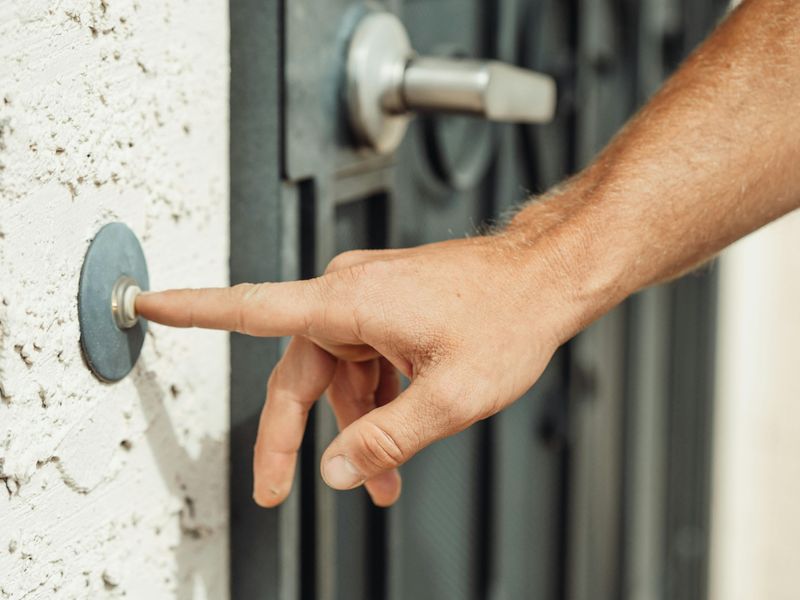10 Things That Used to Be Normal But Now Feel Awkward

The world changes faster than we realize, and behaviors that once felt completely natural can suddenly seem strange. Technology, social media, and shifting cultural attitudes have transformed how we interact with each other and the world around us. What your parents did without a second thought might make you cringe today, and what you did just a few years ago might feel totally weird now.
1. Dropping By Unannounced

Showing up at someone’s house without warning used to be a sign of close friendship. Neighbors would pop over for coffee, and relatives would stop by just to say hello. Nobody thought twice about it because that’s how people stayed connected.
Today, an unexpected knock on the door can feel like an invasion of privacy. We text before we visit, sometimes days in advance. Our homes have become private sanctuaries, and we need mental preparation before hosting anyone.
The shift happened gradually as our lives got busier and our phones got smarter. Now, spontaneous visits feel intrusive rather than friendly, and most people would rather schedule hangouts like business meetings.
2. Using Your Real Name Online

Early internet users often shared their full names, addresses, and personal details without much concern. Social media profiles displayed real identities, and people were proud to be themselves online. Transparency was considered honest and trustworthy.
Privacy concerns have completely changed this approach. Today, using your actual name everywhere online seems naive and potentially dangerous. We create usernames, hide behind avatars, and carefully control what personal information we share.
The internet feels less like a friendly neighborhood and more like a public square where anyone could be watching. Protecting your identity has become essential, and those who share everything openly often face criticism for being careless with their digital footprint.
3. Asking Someone for Directions

Getting lost used to mean rolling down your car window and asking a stranger for help. People pulled out paper maps, stopped at gas stations for directions, and relied on the kindness of locals. It was a normal part of traveling.
GPS has made this practice nearly extinct. When someone actually asks for directions in person now, it feels oddly old-fashioned. We assume everyone has a smartphone with maps, so approaching a stranger seems unnecessary.
The awkwardness goes both ways. The person asking feels outdated, while the person being asked wonders why they don’t just use their phone. This simple human interaction has become a relic of a pre-digital era that younger generations barely remember.
4. Memorizing Phone Numbers

Everyone used to know important phone numbers by heart. You memorized your best friend’s number, your parents’ work numbers, and maybe your grandma’s landline. It was a basic life skill, like tying your shoes.
Smartphones have erased this need completely. Our devices store thousands of contacts, and we rarely dial numbers manually anymore. Try recalling your spouse’s or best friend’s number right now—chances are you’ll draw a blank.
This creates an odd situation where we’re more connected than ever but can’t actually contact anyone without our phones. Losing your device means losing access to nearly everyone you know, which would have seemed absurd just twenty years ago.
5. Talking on the Phone

There was a time when calling someone was the go-to way to connect. You’d just pick up the phone, dial, and talk — no texting, no apps, just a straightforward conversation.
Fast forward to today, and calling someone without texting first feels aggressive. Many people experience genuine anxiety when their phone rings unexpectedly. We’ve trained ourselves to prefer written messages that we can respond to on our own time.
Even necessary phone calls feel uncomfortable now. We rehearse what we’ll say, avoid calling customer service until absolutely necessary, and breathe a sigh of relief when we can handle something through email or chat instead.
6. Waiting Without Your Phone

Waiting rooms, bus stops, and restaurant tables used to be places where people simply sat and waited. You might read a magazine, stare out the window, or strike up a conversation with a stranger. Boredom was just part of life.
Now, being caught without your phone during downtime feels almost painful. We compulsively check our devices every few seconds, scrolling through apps even when there’s nothing new. Sitting still with our thoughts has become uncomfortable.
When your phone dies in public, a strange panic sets in. You don’t know what to do with your hands or where to look. The experience highlights how dependent we’ve become on constant digital stimulation to feel comfortable.
7. Taking Photos With a Camera

Back then, if you wanted to capture memories, you brought a camera — not your phone. You had to choose your shots carefully, wait for the film to be developed, and hope for the best. Taking photos meant something.
Smartphones have made separate cameras feel unnecessary and cumbersome. Pulling out an actual camera at a party or gathering now draws attention and seems overly professional. People wonder if you’re a photographer or just really serious about your hobby.
The quality might be better with a real camera, but the convenience of a phone wins every time. We take hundreds of photos without thinking, while camera users seem like they’re working rather than enjoying the moment. The spontaneity has replaced the craftsmanship.
8. Paying With Cash

Cash was king for generations. You’d hit the ATM before going out, carry bills in your wallet, and count change at the register. Handling physical money was a normal part of every transaction.
Digital payments have made cash feel outdated and inconvenient. When someone pays with exact change at a busy coffee shop, the line behind them grows impatient. Counting bills takes time, and many businesses now prefer or exclusively accept cards.
Young people especially view cash as something their grandparents use. Venmo, Apple Pay, and credit cards dominate modern transactions. Carrying significant amounts of cash can even seem suspicious, completely reversing the old advice to always have emergency money on hand.
9. Having Voicemail

When voicemail came along, it changed the game. Suddenly, missing a call didn’t mean missing out — people would leave real messages, sometimes long and thoughtful. Checking your voicemail was just part of having a phone.
Today, leaving or listening to voicemail feels like a chore nobody wants. Most people see a voicemail notification and immediately feel annoyed rather than curious. We prefer texts that we can read quickly without dedicating time to audio.
Many younger people never even set up their voicemail. They figure anyone important will text, and they’re usually right. The three-minute voicemail from your aunt feels like homework, while a quick text accomplishes the same thing in seconds without the awkwardness.
10. Reading Physical Newspapers

Newspapers were how people started their mornings for over a century. You’d grab your paper from the driveway, unfold it at the breakfast table, and read the news with your coffee. It was a ritual millions shared.
Digital news has made physical newspapers seem impractical and wasteful. The paper is bulky, the ink smudges your fingers, and the information is already hours old by the time you read it. Why bother when your phone delivers instant updates?
Seeing someone read an actual newspaper in public now looks quaint or even pretentious. It signals either a deliberate rejection of technology or an inability to adapt. The satisfying rustle of turning pages has been replaced by the silent scroll of endless feeds.

Comments
Loading…